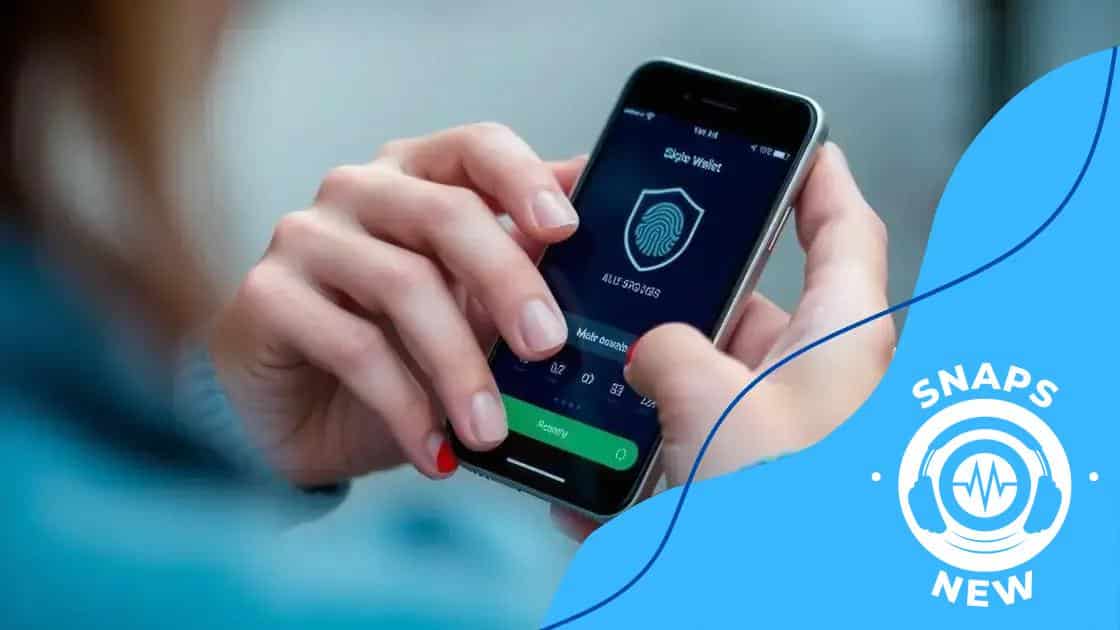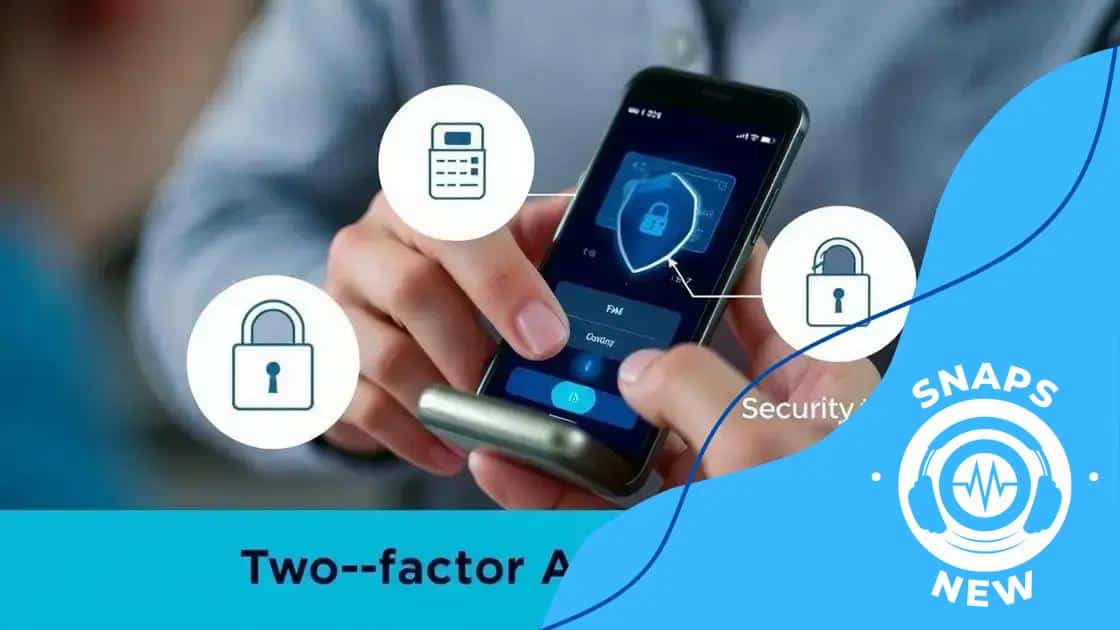Digital wallet security measures to protect your funds

Digital wallet security measures include using strong passwords, enabling two-factor authentication, regularly monitoring transactions, and avoiding public Wi-Fi to protect your financial information from common threats like phishing and malware.
Digital wallet security measures are crucial in today’s tech-driven world, where your funds are just a few taps away. Have you ever considered how vulnerable your finances might be? Let’s dive into how to keep your digital assets safe.
Understanding digital wallets and their importance
Understanding digital wallets is essential in our increasingly cashless society. These wallets store your payment information securely and allow you to make transactions effortlessly. With the rise of online shopping and mobile payments, knowing how they work can help you protect your assets.
Digital wallets are important because they offer convenience and security. When you use a digital wallet, your information is encrypted, minimizing the risk of theft. This technology also enables you to manage your finances more effectively.
Benefits of Digital Wallets
There are several key benefits to using digital wallets:
- Speed: Transactions are instant, meaning you don’t need to wait in line to pay.
- Security: Advanced encryption technology protects your data.
- Convenience: Access all your payment methods in one place.
- Tracking: Easily track your spending and manage budgets.
Additionally, digital wallets can store loyalty cards and coupons, enhancing your shopping experience. You might wonder how this technology impacts day-to-day life. Imagine walking into a store, picking out your items, and checking out with just your phone, all while your sensitive information remains protected.
Understanding how to use digital wallets will undoubtedly enrich your financial habits. This knowledge allows you to take full advantage of the benefits they provide. Moreover, being aware of security features helps you safeguard your information effectively.
Digital wallets are reshaping how we manage payments and financial transactions. As you continue to explore this technology, consider how you can integrate it into your daily routine for a more efficient and secure experience.
Common threats to digital wallet security
When using digital wallets, it’s important to be aware of the common threats that can compromise your financial security. Understanding these risks is the first step in protecting your digital assets.
One major threat is phishing attacks. In these scams, attackers try to trick you into providing personal information. They might send fake emails or messages that look legitimate, asking for your wallet login details. Staying vigilant can help you avoid these traps.
Types of Common Threats
Below are several types of threats that you should be aware of:
- Malware: This software is designed to infiltrate devices and steal data. Always use trusted antivirus software to combat this.
- Public Wi-Fi Risks: Using public networks can expose your wallet to hackers. Avoid accessing your wallet over unsecured Wi-Fi.
- Weak Passwords: Simple passwords can be easily guessed. Use complex passwords and update them regularly.
- Device Theft: If someone steals your phone, they may gain access to your wallet. Use screen locks and remote wipe features to protect your data.
Another threat is the use of outdated software. Regular updates are vital as they patch security vulnerabilities. Not updating your wallet app can leave you exposed to new risks.
Moreover, be cautious about what information you share online. Oversharing can make you a target for scammers. Maintain a low profile when discussing your digital transactions on social media.
By recognizing these common threats, you can take proactive steps to enhance your digital wallet security. Protecting your personal information and staying informed are your best defenses against these risks.
Best practices for securing your digital wallet

Securing your digital wallet is vital in today’s digital age where threats are prevalent. Adopting best practices can significantly reduce the risk of fraud and theft.
First, always use strong, unique passwords for your digital wallet. Simple passwords make it easy for hackers to gain access. Strong passwords include a mix of letters, numbers, and symbols. Regularly changing your passwords is also a good habit.
Additional Security Measures
There are several measures you can take to further protect your digital wallet:
- Enable two-factor authentication: This adds an extra layer of protection by requiring a second form of verification.
- Keep your software updated: Regular updates patch security vulnerabilities. Make sure your wallet app and device operating system are always up to date.
- Use secure networks: Avoid accessing your wallet through public Wi-Fi. Use a secure, private connection whenever possible.
- Monitor your accounts: Regularly check your transaction history for any unauthorized activity. Prompt action can help mitigate potential loss.
Furthermore, consider using a digital wallet that offers advanced security features. Some wallets offer biometric authentication, such as fingerprint scanning, which can enhance security.
Be also cautious about sharing personal information online. Oversharing can increase your risk of becoming a target. Keep your financial information private to prevent it from falling into the wrong hands.
By implementing these best practices, you can help ensure that your digital wallet remains secure, providing you peace of mind while managing your finances.
How two-factor authentication enhances wallet security
Two-factor authentication (2FA) is a critical component of digital wallet security. This extra layer of protection makes it much harder for unauthorized users to access your wallet.
When you enable two-factor authentication, you must verify your identity through a second method after entering your password. This might include a code sent to your mobile device or a fingerprint scan. By requiring two forms of identification, 2FA greatly reduces the risk of unauthorized access.
Benefits of Two-Factor Authentication
Here are some key benefits of using 2FA for your digital wallet:
- Increased Security: Even if someone steals your password, they cannot access your wallet without the second authentication step.
- Real-Time Alerts: You’ll receive an alert whenever a login attempt occurs. This helps you spot suspicious activity immediately.
- Peace of Mind: Knowing that there’s an additional layer of security gives you confidence while making transactions.
Implementing 2FA not only secures your individual wallet but also helps protect your broader online presence. Many people use the same password across various accounts, making them vulnerable. With 2FA, even if a password is compromised, the extra barrier stands strong against intrusion.
Additionally, using apps like Google Authenticator or receiving SMS codes can streamline the process while ensuring that you have an added layer of security. Always opt for the 2FA method that is most convenient for you to encourage regular use.
Overall, adopting two-factor authentication is a wise choice for anyone using a digital wallet. By enhancing security this way, you can better protect your sensitive financial information from the increasing threats online.
What to do if your digital wallet is compromised
If you suspect that your digital wallet has been compromised, acting quickly is essential to protect your funds and personal information. The first step is to change your password immediately. Use a strong, unique password that you have not used before to ensure your wallet is more secure.
After changing your password, enable two-factor authentication if you haven’t done so already. This additional layer will make it harder for anyone to access your wallet without your approval.
Steps to Follow After a Security Breach
Here are key actions to take if you find your digital wallet has been compromised:
- Contact Your Wallet Provider: Reach out to customer support to report the issue. They may help you secure your account and provide additional steps to follow.
- Monitor Transactions: Review your transaction history for any unauthorized purchases. Report these immediately to your wallet provider and your bank or credit card company.
- Check Linked Accounts: Ensure that other accounts linked to your digital wallet are secure. Change passwords and activate 2FA for these accounts as well.
- Consider Freezing Accounts: If you notice any suspicious activity, consider freezing your bank accounts or credit cards linked to your digital wallet to prevent further unauthorized transactions.
It’s also wise to run a security scan on your devices. Malware or viruses can compromise more than just your wallet. Use reputable antivirus software to check for threats.
Finally, take this incident as a learning opportunity. Review and adopt strong security practices to help prevent future compromises. Regularly update passwords, stay aware of phishing scams, and ensure your security measures are up to date.
FAQ – Frequently Asked Questions about Digital Wallet Security
What should I do if my digital wallet is compromised?
Immediately change your password, enable two-factor authentication, and report the issue to your wallet provider.
How can I enhance the security of my digital wallet?
Use strong, unique passwords, enable two-factor authentication, and regularly monitor your account for unauthorized transactions.
What are common threats to digital wallets?
Common threats include phishing attacks, malware, and using public Wi-Fi networks for transactions.
Why is two-factor authentication important?
Two-factor authentication adds an extra layer of security, making it much harder for unauthorized users to access your wallet, even if they have your password.





